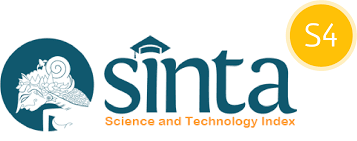Implementasi Virtual Tour JTE UNRI Menggunakan Kombinasi Foto Panorama Dan Rekayasa 3D
DOI:
https://doi.org/10.29408/jit.v6i1.7456Keywords:
3D, Equirectangular, Image Stitching, Panoramic Photos, User Experience, Virtual TourAbstract
Media information has a very important role in efforts to attract prospective students to join. A website needs to be improved in the era of large technological developments. One of the new information media that utilizes the latest technology is a virtual tour. If you look at some of the previous ones, making a virtual tour can be made using panoramic photos made with image stitching techniques from many photos and can also use 3-dimensional engineering results. Both ways have their advantages and disadvantages. In this study, we will combine panoramic photos and 3D engineering to create a virtual tour of the Department of Electrical Engineering, Riau University. Virtual tour created using an equirectangular image base. There are 10 locations included in the virtual tour which four of them use panoramic photos and the remaining six places use 3D engineering. Four panoramic photos and six 3D-engineered equirectangular shapes are combined into one virtual tour. To validate the results of combining panoramic photos and 3D engineering into a virtual tour, user experience testing was conducted using a user experience questionnaire. User experience questionnaire was distributed to 30 respondents. As a result, four scales are in the excellent category: attractiveness, dependability, stimulation, and novelty. Then two scales are included in the good category, namely perspicuity and efficiency, which get a value of 1.78. From the user experience perspective, virtual tours resulting from a combination of panoramic photos and 3D engineering in general can be considered very good. Then this combination of panoramic photos and 3D engineering can be used as a solution for virtual tour documentation if several locations are inadequate to documentReferences
G. W. Intyanto, N. A. Ranggianto, and V. Octaviani, “Pengukuran Usability pada Website Kampus Akademi Komunitas Negeri Pacitan Menggunakan System Usability Scale (SUS),” Walisongo J. Inf. Technol., vol. 3, no. 2, pp. 59–68, 2021, doi: 10.21580/wjit.2021.3.2.9549.
R. B. N. Budi and M. B. Wenas, “Perancangan Virtual Tour Kampus I UKSW sebagai Media Informasi Mahasiswa Baru,” ANDHARUPA J. Desain Komun. Vis. Multimed., vol. 4, no. 01, pp. 51–65, 2018, doi: 10.33633/andharupa.v4i01.1562.
M. Huda and M. Mustagfirin, “Virtual Tour Sebagai Media Informasi Kampus Universitas Wahid Hasyim Semarang,” J. Inform. dan Rekayasa Perangkat Lunak, vol. 1, no. 2, pp. 79–81, 2019, doi: 10.36499/jinrpl.v1i2.2950.
D. Khairunnisa, A. D. Rachmanto, Z. Munawar, and M. Haitan, “Aplikasi Virtual Tour Dinamis Pada Universitas Nurtanio Bandung Berbasis,” in Proseding SNASIKOM, 2022, no. 1, pp. 42–50.
E. Ariandis Baura, V. Tulenan, and X. B. N. Najoan, “Virtual Tour Panorama 360 Derajat Tempat Wisata Kota Tobelo,” J. Tek. Inform., vol. 13, no. 3, 2018.
A. F. Dianta, Z. Maisat, and E. Darmawan, “Analisis Pengalaman Pengguna Aplikasi Virtual Tour Kampus PENS Menggunakan Teknik Usability,” J. Inovtek Polbeng, pp. 1–13, 2022.
A. Suhendar and A. Fernando, “Aplikasi Virtual tour Berbasis Multimedia Interaktif Menggunakan Autodesk 3Ds Max,” ProTekInfo, vol. 3, no. 1, pp. 30–35, 2016.
M. Mardainis, M. Arifin, R. Rahmaddeni, and Y. Efendi, “Virtual Tour Interaktif 360 Derajat Menggunakan Teknik Image Stitching Sebagai Media Informasi Kampus STMIK Amik Riau,” Digit. Zo. J. Teknol. Inf. dan Komun., vol. 11, no. 2, pp. 209–222, 2020, doi: 10.31849/digitalzone.v11i2.4265.
E. Susilo, R. R. Andhi, and D. Ramadhani, “Evaluasi User Interface Website Prodi Teknik Informatika UNRI Menggunakan User Experience Questionnaire (UEQ),” Infotek J. Inform. dan Teknol., vol. 5, no. 2, pp. 366–373, 2022.
H. B. Santoso, M. Schrepp, R. Yugo Kartono Isal, A. Y. Utomo, and B. Priyogi, “Measuring User Experience of the Student-Centered e-Learning Environment,” J. Educ. Online-JEO, vol. 13, no. 1, pp. 58–79, 2016.
H. B. Santoso, R. Y. K. Isal, T. Basaruddin, L. Sadira, and M. Schrepp, “Research-in-progress: User experience evaluation of Student Centered E-Learning Environment for computer science program,” in 2014 3rd International Conference on User Science and Engineering (i-USEr), 2015, pp. 52–55, doi: 10.1109/IUSER.2014.7002676.
A. Hadisopiyan, C. D. Suhendra, and P. H. Rantelinggi, “Membuat Game 3d Survival Horror ‘Suanggi Survival Papua’ Berbasis Desktop Menggunakan Unity,” INFORMAL Informatics J., vol. 5, no. 3, p. 96, 2020, doi: 10.19184/isj.v5i3.21235.
D. Septian, Y. Fatman, S. Nur, U. Islam, and N. Bandung, “Implementasi Mdlc (Multimedia Development Life Cycle) Dalam Pembuatan Multimedia Pembelajaran Kitab Safinah Sunda,” J. Comput. Bisnis, vol. 15, no. 1, pp. 15–24, 2021.
M. S. Hartawan, “Penerapan User Centered Design (Ucd) Pada Wireframe Desain User Interface Dan User Experience Aplikasi Sinopsis Film,” J. Elektro Inform. SWADHARMA, vol. 2, no. 1, pp. 43–47, 2022.
L. Faulkner, “Beyond the five-user assumption: Benefits of increased sample sizes in usability testing,” Behav. Res. Methods, Instruments, Comput., vol. 35, no. 3, pp. 379–383, 2003, doi: 10.3758/BF03195514.
Downloads
Published
How to Cite
Issue
Section
License
Semua tulisan pada jurnal ini menjadi tanggung jawab penuh penulis. Jurnal Infotek memberikan akses terbuka terhadap siapapun agar informasi dan temuan pada artikel tersebut bermanfaat bagi semua orang. Jurnal Infotek ini dapat diakses dan diunduh secara gratis, tanpa dipungut biaya sesuai dengan lisense creative commons yang digunakan.
Jurnal Infotek is licensed under a Creative Commons Attribution 4.0 International License.
Statistik Pengunjung




